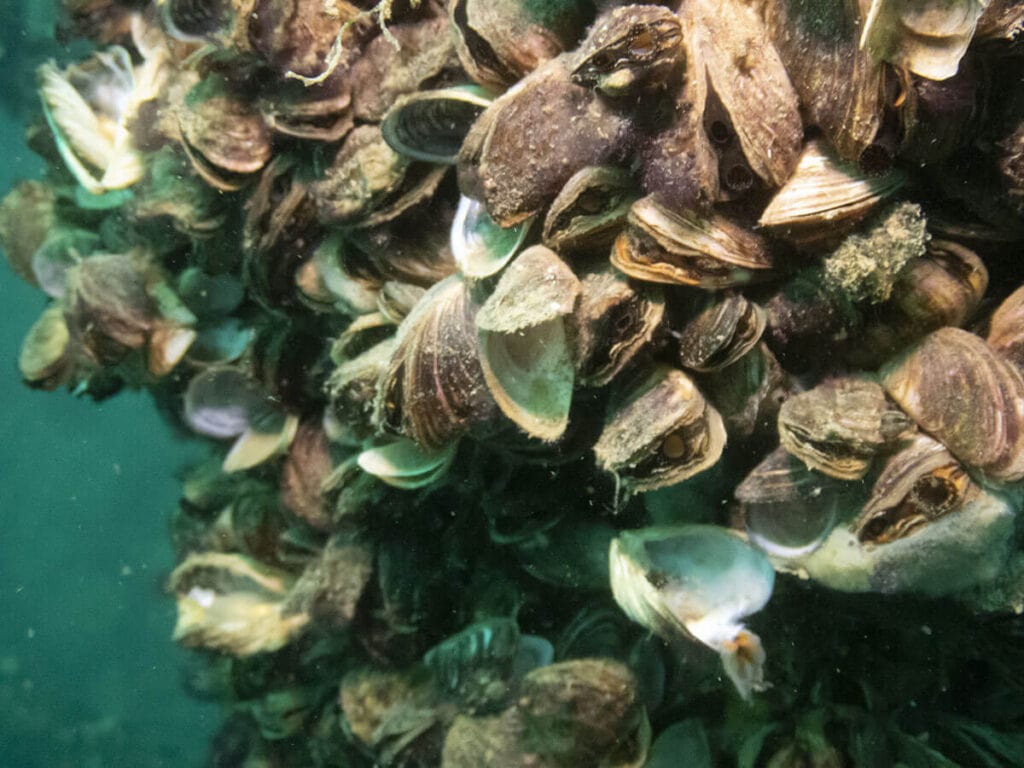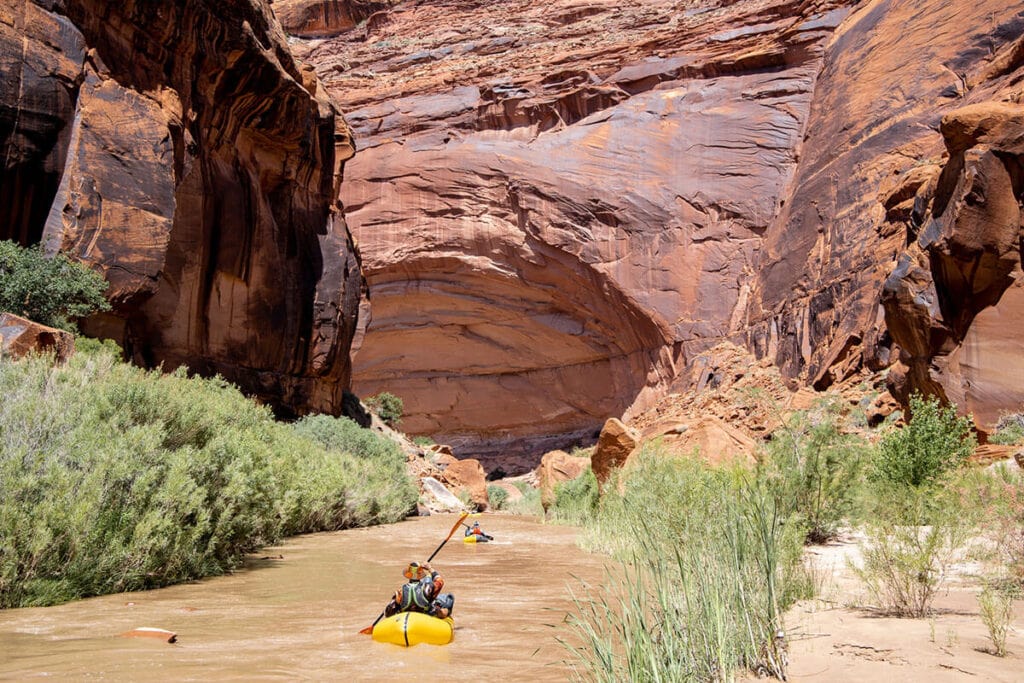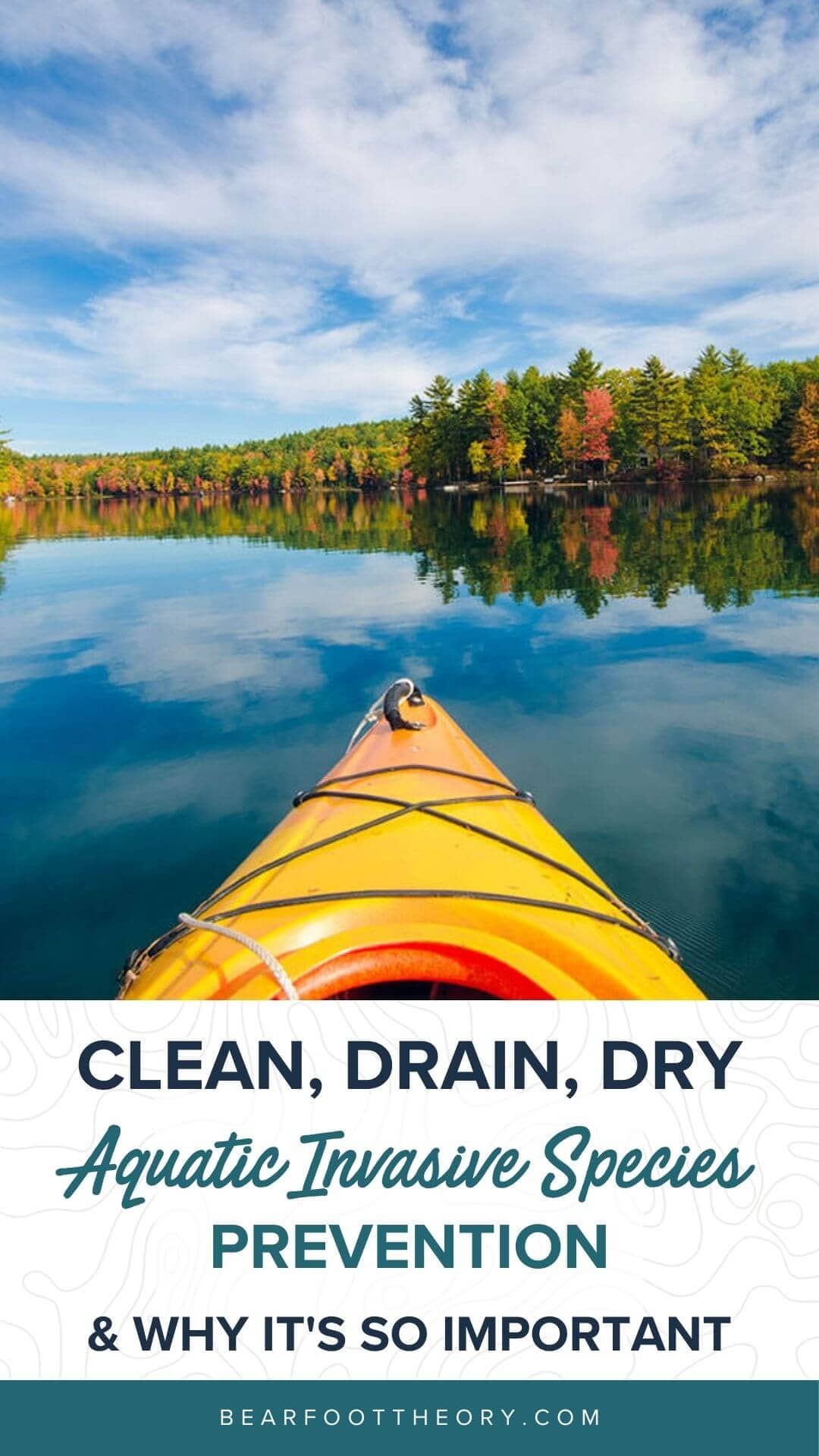Clean Drain Dry: Prevent the Spread of Aquatic Invasive Species
Here’s how to help prevent the spread of aquatic invasive species by following Clean Drain Dry whether you’re rafting, kayaking, or boating.

A couple years back when I was in Montana, I had the opportunity to kayak in Bighorn Canyon National Recreation Area and to fish on the Bighorn River. During this trip, I learned about the growing issue of aquatic invasive species in Montana’s rivers and lakes and how their spread can be prevented by 3 simple steps: Clean Drain Dry, which I’ll go over here.
This issue isn’t limited to Montana, it’s an issue in bodies of water across the US, and as outdoor recreationists, it’s our responsibility to know how to recreate responsibly on the water whether we’re going kayaking, paddleboarding, canoeing, rafting, or boating.
Hundreds of thousands of people recreate on the water each year, and many travel from place to place (hello van lifers!), so if you live in or plan to visit any state that offers water recreation, it’s especially important to be aware of aquatic invasive species and the small actions you can take that make a huge difference in preventing their spread.
This post may contain affiliate links.
What are Aquatic Invasive Species?
Aquatic invasive species are non-native plants, animals, and pathogens that are accidentally introduced into a region they don’t normally inhabit. Once introduced, they often multiply rapidly due to the lack of natural predators, and they can throw off the balance of an ecosystem in many ways. It’s extremely difficult to control aquatic invasive species once they are introduced to a new area, which is why preventing their spread in the first place is so crucial.
For example, in Montana, the New Zealand mud snail is multiplying rapidly and is outcompeting native species such as other snails, mussels, and aquatic insects – which fish depend on for food. This is causing a ripple effect that’s felt throughout the entire ecosystem.
Zebra and quagga mussels are some of the most well-known aquatic invasive species. They were first introduced into the Great Lakes region of the U.S. in the 1980s via ballast water carried by a ship. They quickly spread and now inhabit 23 states where they damage local ecosystems and infrastructure in a number of ways.
Other well known aquatic invasive species include Hydrilla, an aquatic weed now found in 30 states, water fleas (which are no fun to encounter), and Asian carp which eat up to almost half their body weight each day, stripping away food from native species.

Save this post!
Enter your email & I'll send this post to your inbox! You'll also receive my weekly newsletter full of helpful advice for planning your adventures.
What are the Impacts of Aquatic Invasive Species?
Aquatic invasive species can harm local water supplies, damage native ecosystems, impact outdoor recreation activities, and threaten our health and safety. They cost the U.S. billions of dollars annually to manage and can cause long-term economic and environmental harm. That’s why taking simple steps like Clean, Drain, Dry (detailed below) is so important.
On Native Species
The outdoor activities we enjoy are dependent on healthy ecosystems, and unfortunately, aquatic invasive species often throw off this delicate balance. Aquatic invasive plants and animals can damage local ecosystems by killing off native species, either directly by consuming them or indirectly by outcompeting them for resources. This can have a ripple effect that impacts fishery populations as well migratory bird populations and other wildlife in the food chain.
On Water Quality
Ever hear of swimmer’s itch? Aquatic invasive species can introduce pathogens that are dangerous to native wildlife and even to our own health and safety, to the point where some bodies of water are closed to the public.
They can also cause costly damage to water infrastructure systems which can result in decreased public water availability and impact recreation. For example, invasive mussels and plants can clog the intake pipes of hydro-power plants, water supply plants, and agriculture irrigation systems.
On Outdoor Recreation
Aquatic invasive species can impact our ability to enjoy the water and can even result in new fees and regulations. For example, some types of aquatic weeds clog waterways to the point that boats can’t get through them. Invasive mussels leave piles of sharp shells that are no fun to step on and can slice neoprene.
Sport and commercial fishing can be affected by aquatic invasive species as well as local fish populations are impacted. Reduced water recreation opportunities and reduced fishery populations means local fishing guides and other outdoor businesses could receive the brunt of the economic impacts.
On Your Outdoor Gear
That new fishing motor? Invasive mussels can give you a run for your money. They can attach to your hull, clog your motor, and block intake screens, resulting in expensive repairs.

How do Aquatic Invasive Species Spread?
Aquatic species can attach to boats or any watercraft. Packrafts and other easily packable and transportable watercraft like inflatable and foldable kayaks can be particularly good carriers because they are often taken from one place to another and have nooks and crannies where invasive species (some so small you can’t even see) can hide.
Aquatic invasive species can also become entangled or attached to propellers, anchor lines, boat trailers, and ballast tanks and can even hide in sand and small pools of water in buckets, nets, waders, and anchors. They are easily spread from one body of water to another, with only one mistake being enough for the plant, animal, or pathogen to infect a new area.
Say you go kayaking in Idaho one weekend, and you have a little water in your hull. You throw the kayak in the back of your truck and then the following weekend, you take the kayak out to Bighorn Canyon National Recreation Area in Montana. You could be unknowingly transporting New Zealand mud snails that are invisible to the naked eye and can survive in small amounts of water trapped at the bottom of your boat.
Some species, including mud snails and zebra mussels, can also live outside of water for several days, so it’s important that we as outdoor recreationists follow Clean Drain Dry procedures (detailed below) to make sure we aren’t further contributing to this problem.

How to Clean Drain Dry
There are three easy steps you can take to help avoid the spread of aquatic invasive species, summed up as Clean Drain Dry.
- CLEAN: When you get your boat, kayak, raft, paddleboard, or other watercraft out of the water, inspect it to make sure there are no plants, mud or debris. If you find anything, remove it and dispose of it in the trash or on dry land away from water before moving to a new location.
- DRAIN: Make sure there is no standing water in your personal watercraft. In a motorboat, remove the drain plug to drain the bilge and inspect the engine area to make sure all the water is drained. If you’re fishing, make sure your bait buckets and internal compartments are clean and dry as well. If you are in a kayak, tip it upside down to make sure there isn’t any water in the bottom of your boat.
- DRY: Use a rag or towel to dry your vessel including all compartments, lightwells, and baitbuckets, as well as your anchor (if applicable). Most aquatic invasive species can only survive in wet conditions, so this is one of the best ways to help prevent their spread.
A fourth measure which is also important to take is to stop at inspection stations. Many states require anyone carrying a watercraft of any kind (motorized or not) to stop at inspection stations which you may see along the side of the road or highway in areas where invasive species are an issues. This applies whether you’re from out of state or not and includes everything from motorboats, rafts, drift boats, canoes, and kayaks to paddleboards and sailboats.
If you’re a van lifer like me and travel with a packraft, inflatable kayak, or large inflatable stand-up paddleboard, be sure to stop as well to see if you need to be inspected.
These inspection stations are there to help ensure invasive species and pathogens don’t get unknowingly transferred and spread.

Fishing, wildlife viewing, and other water activities can all be negatively impacted by aquatic invasive species which is why it’s so important that we do our part to prevent their spread.
Following Clean Drain Dry protocol is critical to help control and prevent the spread of aquatic invasive species everywhere we recreate. The success of aquatic invasive species control programs is largely dependent on us following these steps whenever we recreate in these sensitive areas. So whether you are rafting, boating, kayaking, canoeing, or SUPing, please recreate responsibly and help ensure that these aquatic ecosystems remain healthy for generations to come.
Got any questions? Is there something I missed? I want to know – have you ever encountered aquatic invasive species and how you use best practices to prevent them from spreading. Leave us a comment below!

